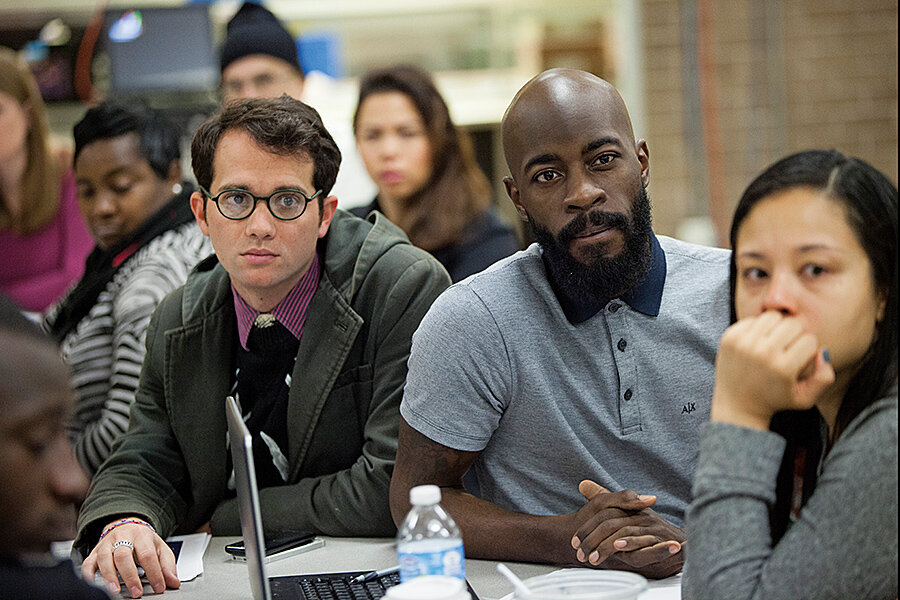Education's new front line
Loading...
Once upon a time, a principal was the seldom seen person behind the voice on the PA system – remote, mysterious, a little scary. The principal’s office was the place not to be sent. In the days of corporal punishment, a visit could mean a whack with a paddle. In more enlightened times, it could mean a stern talking-to and a call to the parents. (A couple of trips and I knew I didn’t want to go back – and didn’t.)
A principal is a boss. As with any boss, at one time it was normal for a principal to be holed up in an office, buffered by secretaries and assistants, making policy, holding meetings, and generally running the business end of the school. Today, as you’ll see in Peg Tyre’s year-in-the-life profile of charter school principal Krystal Hardy (click here to read it), a principal is often in the trenches with students and teachers.
That’s not just because being hands-on is the modern approach to being a boss. The relentless emphasis on the data-driven performance of students, teachers, and schools – the measuring of progress by test scores and evaluation forms – has, for better or worse, made principals directly responsible for the success of their schools.
If you step back a moment, you’ll recognize a trend. Hierarchy everywhere is being flattened. Partly, that is the result of cost-cutting and technology; partly, it’s today’s management mantra. Everyone in a workplace is now required to roll up his or her sleeves, show results, and improve the brand. (Some organizations have done away with hierarchies altogether. The company that makes Gore-Tex operates without a chain of command. A more radical approach, known as “Holacracy,” features no bosses at all. Zappos, the online shoe retailer owned by Amazon, is trying it.)
There will always need to be a buck-stops-here person, even in the most cutting-edge company, but the boss role is now more about coaching than managing. That’s Ms. Hardy’s approach – developing, encouraging, getting directly involved when necessary, disciplining if she has to, but also stepping back so others can step forward.
Still, there’s that data. Schools track attendance, behavioral issues, and, most important, student performance relative to other students in math, science, reading, and other disciplines. Data is indifferent to the ingredients that produce it – management theories, organizational morale, new technology, individual effort. It is a pitiless measuring device.
That, of course, tempts some teachers and principals to “teach to the test,” to use formulas and memory aids to help students solve problems. There’s a place for that (multiplication tables and handy rules like “i” before “e” except after “c” have saved many a day). But education is really about teachers and students exploring ideas in a disciplined manner. As that famed educator Socrates said, “Education is the kindling of a flame, not the filling of a vessel.”
Krystal Hardy is kindling that flame. Good test scores have to follow, even if not immediately. If not, maybe there’s something wrong with the test.






